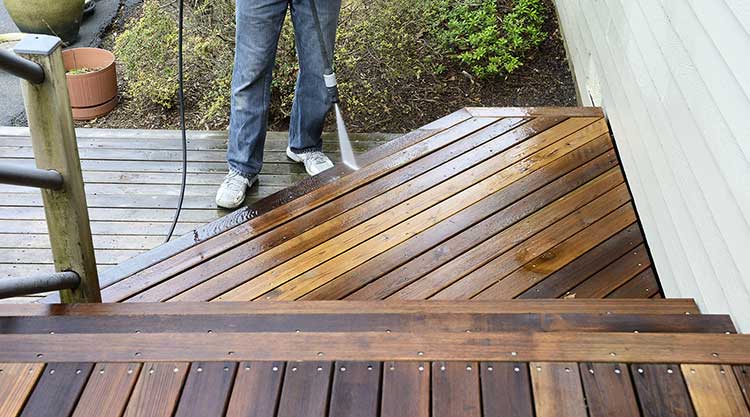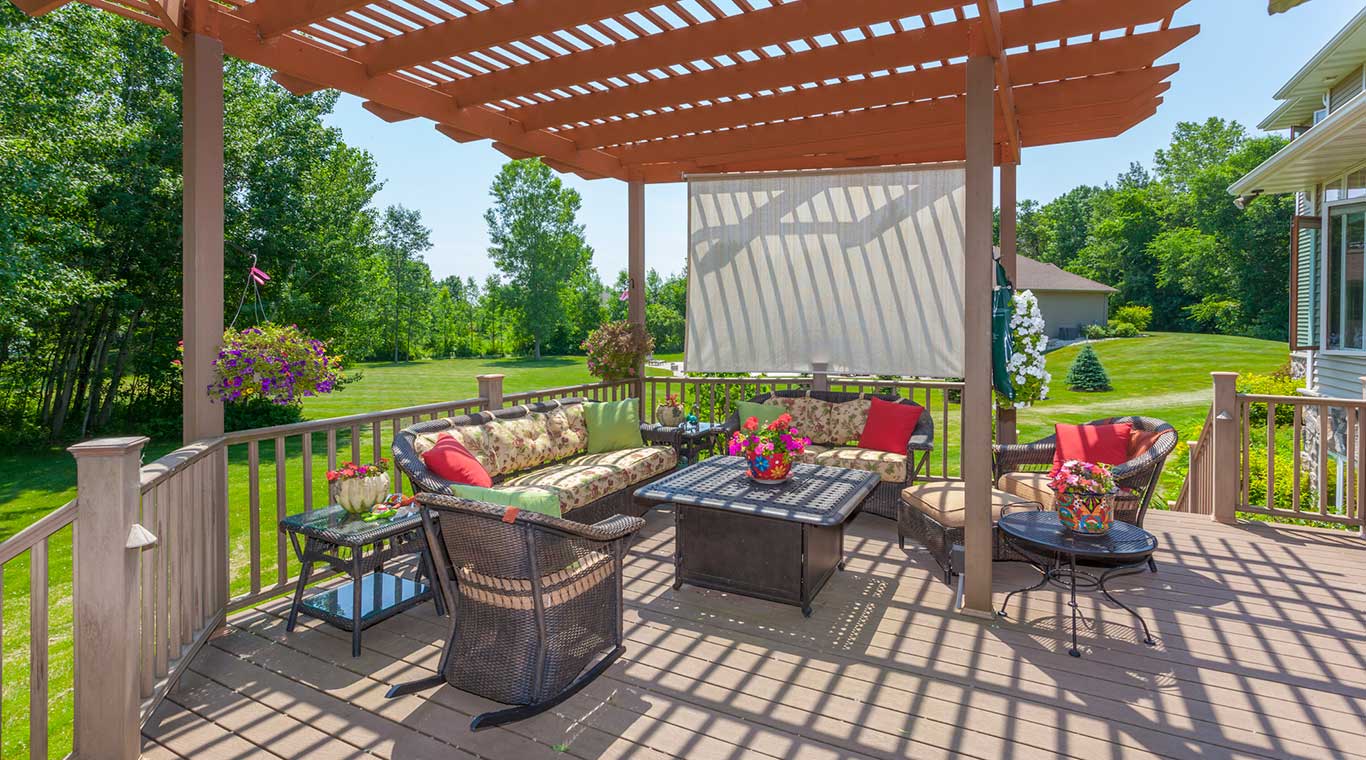
Care & Maintenance
Protect your investment with the proper maintenance program.
Having a better backyard means investing time and money in a deck and other outdoor projects. The right care and maintenance will protect your YellaWood® brand lumber from the harsh effects of weathering caused by rain, sunlight and temperature change. The following information that follows will help you protect your investment and get the most enjoyment and satisfaction out of your backyard.
Water Repellents
Apply water repellent within six weeks of the project's completion. For the best results, water repellents should be applied annually and stains should be re-applied as needed. Always follow the manufacturer's directions when applying water repellents or semi-transparent stains containing water repellent. Get more info on sealing, painting and staining.
Cleaning
A simple solution of mild soap and a pressure washer will help clean your project of surface mold and dirt. Just keep the pressure low, use a 45-degree fan and keep the wand moving so you don't damage your deck. There are also cleaning products at your local dealer made especially for pressure treated wood. Keep in mind that surface mold does not affect decay-resistant properties of your project. After cleaning, a water repellent or a stain with water repellent can be applied to help reduce weathering.
Regular Wood Inspection and Replacement
Severely warped and splitting lumber that cannot be salvaged should be replaced. It is unfortunate, but in spite of homeowners' best efforts, some pieces of wood, through the natural growing characteristics in the grain pattern, will mechanically degrade over time to become unsuitable for use.
Fastener Inspection
Your regular maintenance program should include fastener inspection to determine if nails, screws or bolts are working loose. A nail that has popped out of the wood can be driven back in, and splitting boards can, in some cases, be reinforced with additional fasteners. See the Deck Safety Checklist for more.
Disposal
Preserved wood may be disposed of in landfills or burned in commercial or industrial incinerators or boilers in accordance with federal, state and local regulations. Treated lumber should never be burned in open fires, stoves, fireplaces or residential boilers.
Natural Wood Occurrences
That little yellow tag on the end of your lumber means your lumber has proven protection against rot, fungal decay and termite attack. However, to get the most of out of your project, a regular maintenance program is necessary to minimize the effects of the weather. Whenever a project is built with treated wood and exposed to the weather, certain inherent properties of the wood become evident. Since the characteristics listed below are natural to wood, they are not warranted against such occurrences. Here are examples of what can happen:
SHRINKAGE
As wood dries, you can expect some slight shrinkage in both width and length to occur. To minimize gaps between boards, wet wood should be butted together during installation.
CHECKS, SPLITTING AND GRAIN SEPARATION
As wood is exposed to alternating cycles of wetting and drying, some checking and splitting may be expected.
BOWING, CROOKING, CUPPING AND TWISTING
Wood may bow, crook, cup or twist in varying degrees depending on stresses released by initial sawing of the lumber and moisture absorption.
SEVERE WARPING AND SPLITTING
Severely warped or buckled wood is wood that has twisted to the point where it is an eyesore or structurally unsound. Severely split wood will have a crack that goes completely through the board and has opened. These severe warping and splitting conditions can sometimes be corrected, but in worst case situations, the wood may have to be replaced. Replacement of severely warped and split wood is part of a regular maintenance program.
COLOR FADING
When wood is exposed to ultraviolet rays of the sun, color fading occurs. Freshly treated YellaWood® brand pressure treated wood appears only slightly greener than untreated wood. In a few weeks' time, it turns tan or brown and eventually weathers to the familiar gray color. The use of a high-quality stain will renew the desired color. A stain containing a water repellent is recommended.
FUNGAL DECAY AND TERMITES
Moisture penetration can cause rot and decay. Unprotected wood can be destroyed by termites. To keep your outdoor project strong and attractive, use only YellaWood® brand pressure treated wood.
Care and Maintenance
Protect your project from the harsh effects of weathering.

